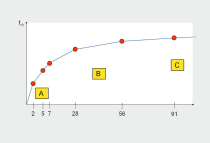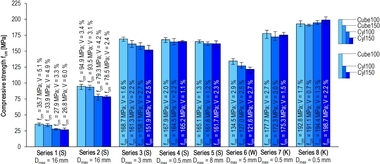Testing ages deviating from the 28-day principle
In most concrete engineering applications, a concrete testing age of 28 days is useful to determine its strength, which also applies to on-site monitoring. On the one hand, the concrete has usually reached the major portion of its final strength at this age; on the other hand, a result that proves compliance with specified strength parameters is available within a period that is still acceptable from a site monitoring point of view. Given this situation, one of the basic principles included in the Musterliste der Technischen Baubestimmungen (MLTB; Official List of Technical Building...






